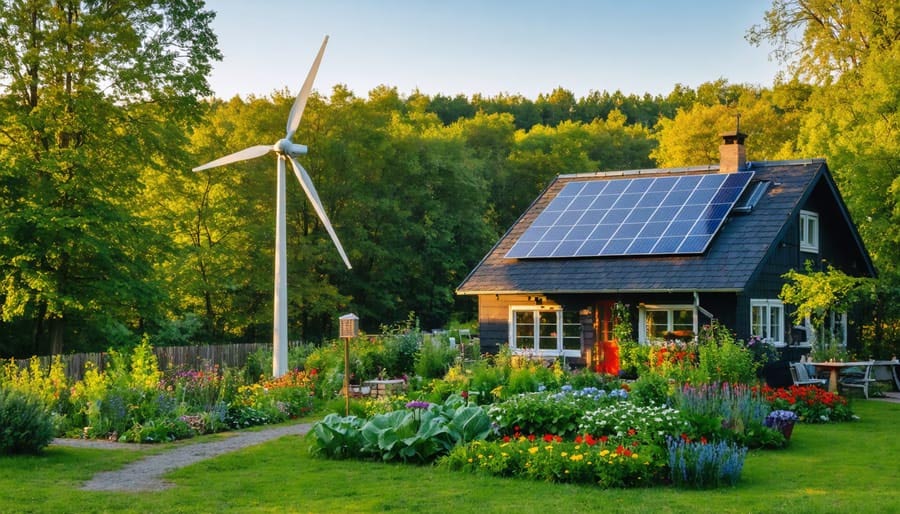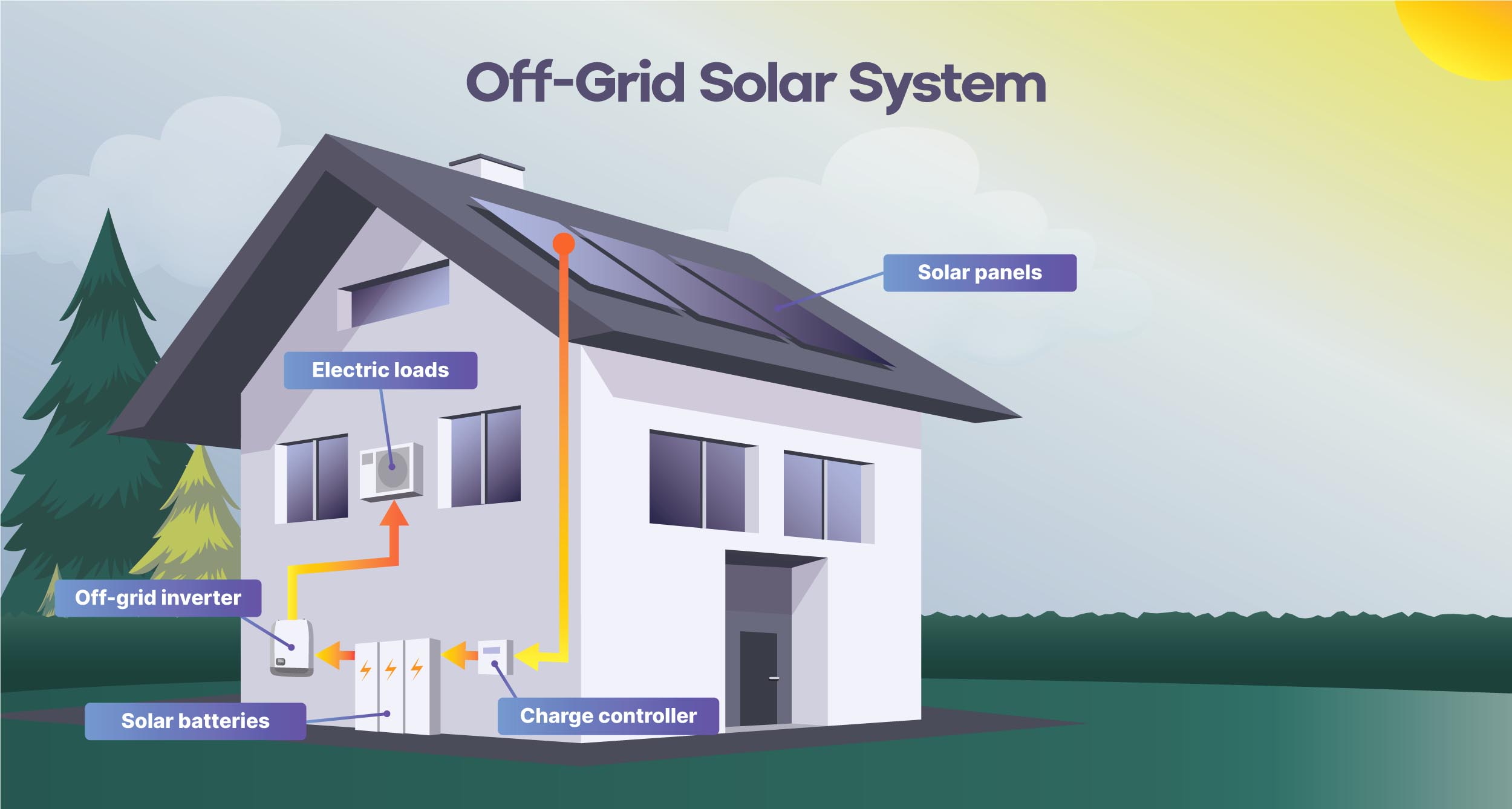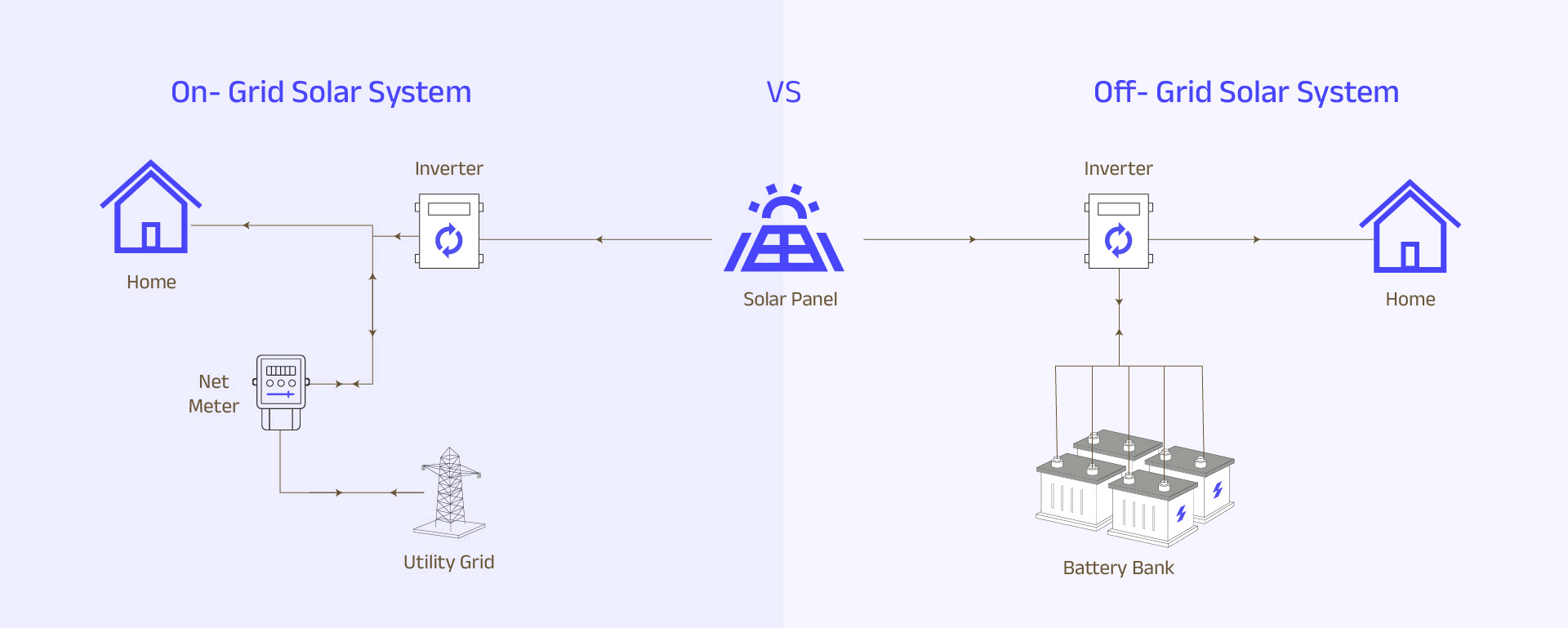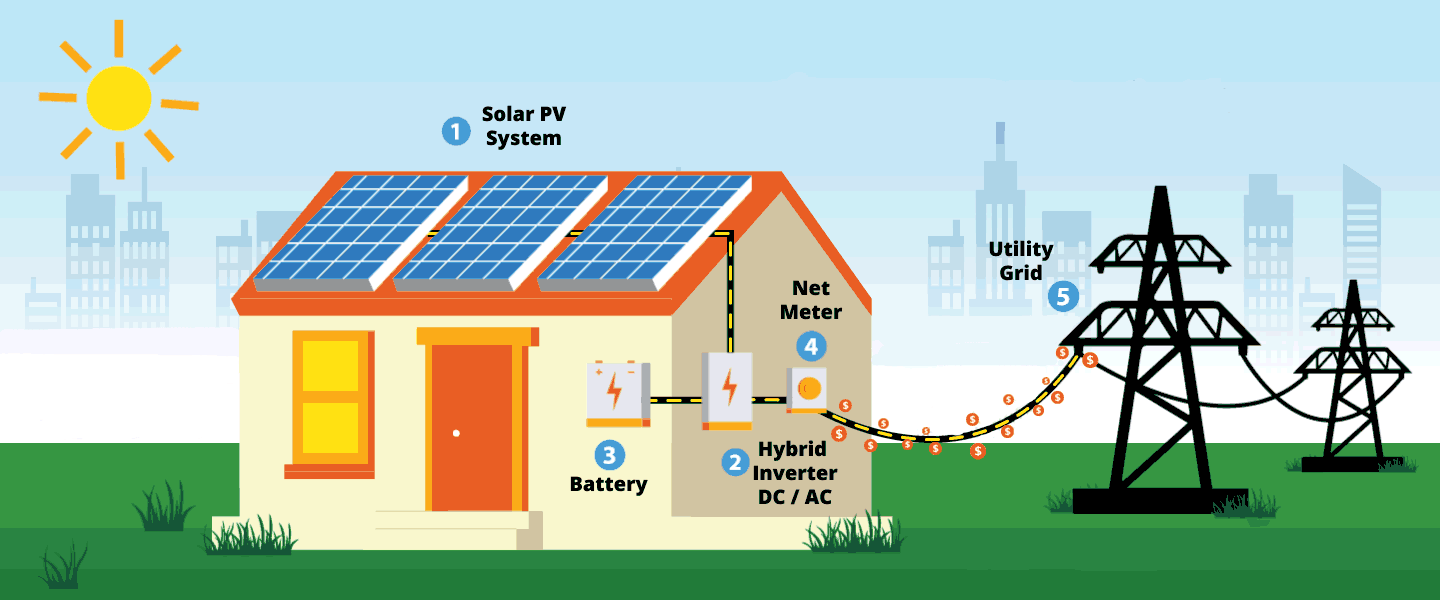Are you tired of rising electricity bills and seeking a sustainable and reliable power solution? Investing in an off grid solar system is not just a step towards energy independence; it's a powerful financial strategy. While the initial investment may seem substantial, the long-term cost savings are undeniable. This guide will break down exactly how an off-grid solar power system pays for itself, empowering you to make an informed decision for your home and wallet.
Understanding Off Grid Solar Systems
What is an Off Grid Solar System?
An off grid solar system is a self-contained electricity generator. Unlike grid-tied systems, it operates independently from the main utility grid. It harnesses energy from the sun using off grid solar panels, stores it in batteries for use at night or on cloudy days, and converts it into usable household electricity through an inverter. This makes it the ultimate solution for solar power for off grid living, whether in a remote cabin, a rural homestead, or simply for those seeking complete energy autonomy.

Key Benefits of Off Grid Living
The advantages extend beyond simple cost savings:
- >> Energy Independence: Free yourself from utility companies, unpredictable rate hikes, and power outages.
- >> Environmental Impact: Generate clean, renewable energy and drastically reduce your carbon footprint.
- >> Remote Viability: Power any location, no matter how far from the nearest power line.
Cost Savings Overview: A Smart Financial Move
Initial Investment vs. Long-Term Savings

The most significant aspect of an off grid home solar system is the shift from a variable monthly expense to a fixed, one-time capital investment. You are paying for electricity for decades in advance.
Once the system is paid off, your energy costs will be reduced to minimal maintenance, leading to substantial savings over the system's 25+ year lifespan.
Factors Influencing Your Cost Savings
Several key factors determine your overall cost savings:
- ⭐ Installation Costs: This includes the price of the complete off grid solar system (panels, batteries, inverter, etc.) and professional installation labor. While DIY off grid solar kit options can reduce this, professional installation ensures optimal performance and safety.
- ⭐ Maintenance Costs: Modern off grid solar electric systems are remarkably low-maintenance. Primary costs involve periodic battery replacement (every 5-15 years, depending on the type) and occasional system checks.
Essential Off Grid Solar System Components

A robust off grid solar power system consists of several key components:
① Solar Panels: The primary energy harvesters. The efficiency and the number of off grid solar panels directly determine your power generation capacity.
② Solar Battery Storage: The heart of any off grid solar system with generator backup. Batteries store the energy generated during the day for use during the night.
• Types of Batteries: Lead-acid is a traditional and cost-effective option, while Lithium LiFePO4 solar batteries offer a longer lifespan, greater depth of discharge, and higher efficiency, though at a higher upfront cost. Many off grid solar system packages with batteries now feature lithium technology for better long-term value.
③ Inverters: This critical component converts the direct current (DC) electricity stored in your batteries into the alternating current (AC) used by your household appliances.
④ Charge Controllers: These regulate the voltage and current coming from the solar panels to the batteries, preventing overcharging and extending battery life.
Comparing Solar Power Systems
Off Grid vs. On Grid Solar Systems

The fundamental difference lies in connection and cost structure. An off grid on grid solar system comparison reveals that:
- ⭐ On-Grid Systems are connected to the public electricity grid. They can offset your bill but offer no power during a grid outage.
- ⭐ Off-Grid Systems provide complete independence. The savings come from eliminating electricity bills entirely, making them ideal where grid connection fees are prohibitively expensive.
Mixed Systems: The Hybrid Solar System

A hybrid solar system (or off grid on grid solar) offers a middle ground. It combines battery storage with a grid connection. This allows you to use stored solar power during peak rate periods and draw from the grid only when necessary, optimizing cost savings while maintaining a backup.
Analyzing Efficiency and Cost Benefits
While off grid solar energy systems require a larger battery bank and more sophisticated equipment than on-grid systems, their financial benefit is calculated differently. The return on investment (ROI) is measured against the cost of alternative power—be it decades of utility bills or the exorbitant cost of extending a power line.
Financing Options and Incentives
Government Grants and Subsidies
While federal incentives such as the Investment Tax Credit (ITC) often favor grid-tied systems, some local and state grants, rebates, or tax exemptions are available for off-grid solar installations, especially for rural or agricultural properties. Researching local programs is crucial.

Solar Power Kit Financing
Many suppliers offer financing plans for solar power kits and off grid solar power kits. This can make the initial investment more manageable by spreading the cost over several years, allowing you to start saving on energy immediately.
Long-Term Return on Investment (ROI)
The ROI for an off grid solar electricity system is impressive. By locking in your energy cost today, you protect yourself from future inflation and utility rate increases. The payback period can range from 5 to 15 years, after which you enjoy virtually free electricity for the remainder of the system's life. This represents not just a saving, but a valuable addition to your property.
Conclusion
Embracing offgrid solar power is a forward-thinking decision that marries environmental responsibility with profound financial wisdom. The path to cost savings is clear: investing in a high-quality off-grid solar system one time frees you from monthly bills for life. By understanding the components, comparing system types, and leveraging available financing, you can unlock the door to true energy freedom and long-term economic gain.
Frequently Asked Questions (FAQs)
Q1. How much does a complete off-grid solar system cost?
A1: The cost of a complete off-grid solar system can vary widely, typically ranging from $15,000 to $60,000 or more. The final price depends on your energy needs, the quality of the components (especially batteries), and your location. A smaller off-grid solar kit for a cabin will be on the lower end, while a full off-grid home solar system for a large family home with generator backup will be a more significant investment.
Q2. Can an off-grid solar system power an entire house?
A2: Yes, a properly designed and sized off-grid solar power system can absolutely power an entire house. The key is to accurately calculate your daily energy consumption and size the solar array, battery bank, and inverter accordingly. This often involves investing in energy-efficient appliances and being mindful of usage, especially during periods of low sunlight.
Q3. How long does an off-grid solar battery last?
A3: Battery lifespan is a critical factor in long-term cost savings. Lead-acid batteries typically last 5-7 years, while more advanced lithium-ion batteries, common in modern off-grid solar system packages with batteries, can last 10-15 years or more. Proper maintenance and a properly sized system are crucial to maximizing battery life.
Ready to calculate your savings? Start exploring a complete off grid solar system that's tailored to your energy needs today!
Contact our solar expert at sales@youth-power.net.
Post time: Oct-10-2025

